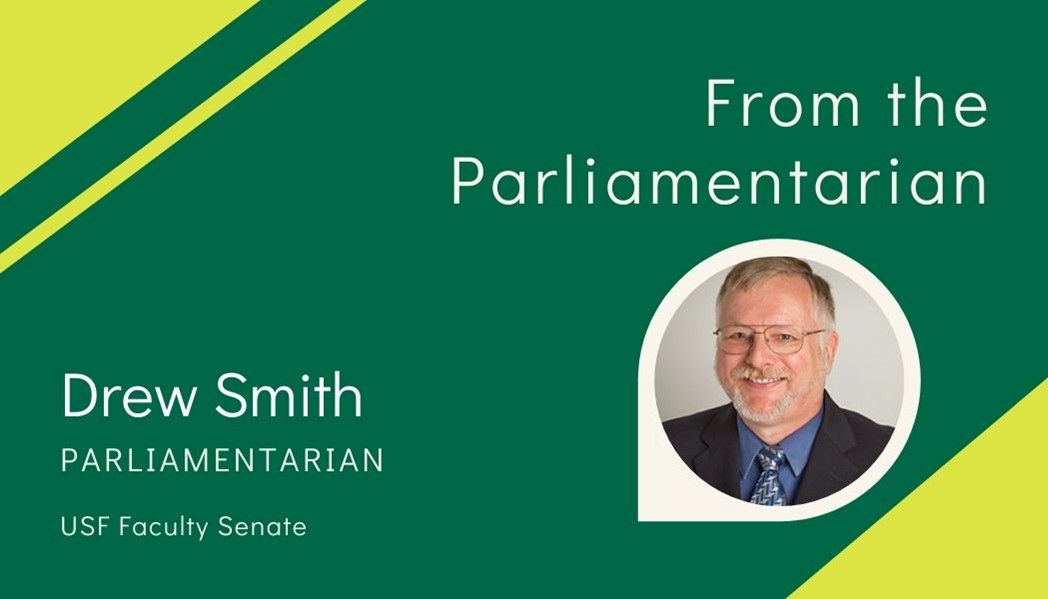It is my experience in my being the USF Faculty Senate Parliamentarian as well as my having been the parliamentarian for other groups, that motions are the most confusing part of running an organization’s meetings. In particular, there is confusion about which things need a motion and which don’t.
Let’s start with the underlying purpose of motions. In general, the purpose of a motion is to bring before the meeting an issue of organizational business that needs to be discussed and voted upon by the members. But there are two things that generally do not need motions: approving the minutes and adjourning the meeting.
The minutes are intended to be a record of what was done at a given meeting (and not what was merely said). Because both the Faculty Senate and the Faculty Senate Executive Committee hold regular monthly meetings, then the minutes of the previous meeting are normally approved at the next meeting. As the minutes are sent out to the members at least several days prior to the meeting, the members are expected to review the minutes in advance in order to be prepared to offer any corrections or additions, without delaying the meeting. The Chair (normally the Faculty Senate President) announces that the minutes were sent out in advance, and asks if there are any corrections, waiting a brief moment for any responses. Even members who were absent at the previous meeting have the right to offer corrections. This process is rarely contentious, and therefore any proposed corrections are normally considered to be acceptable by unanimous consent. If there was a correction, the Chair may then ask if there are any further corrections. Once any and all corrections are dealt with, the Chair can then announce “There being no corrections (or further corrections) to the minutes, the minutes are approved.”
Regarding the adjournment of meetings, the Faculty Senate and the FSEC have a stated agenda and a normal time for adjournment. Once the agenda has been completed (even if the meeting runs a bit late), the Chair can ask “Is there any further business?”, and if there is no response, then the Chair can simply state “Since there is no further business, the meeting is adjourned.”
